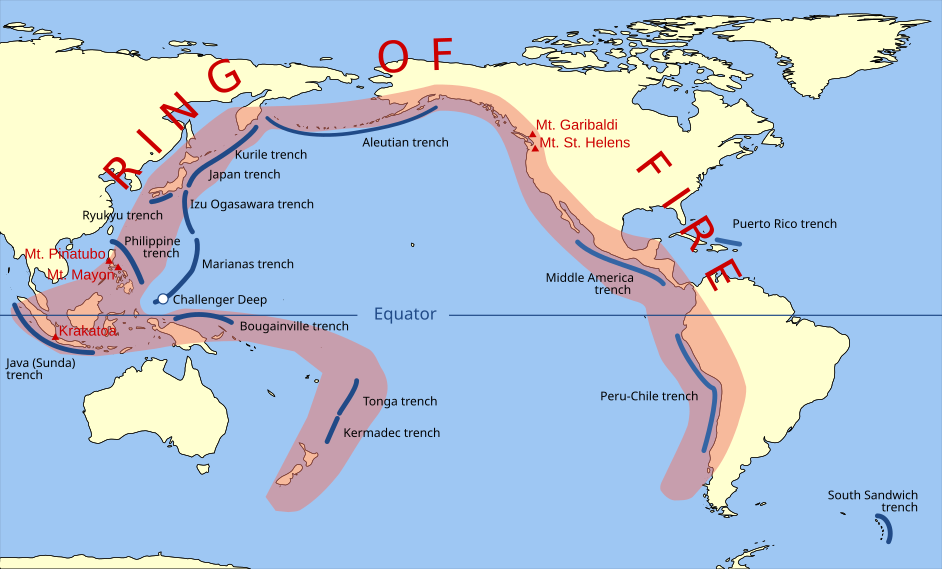Earthquakes are formed when the plates underneath the Earth’s surface move in different directions. These plates form a friction between each other in faults. It then sends a signal on an outward direction commonly known as seismic waves.
The Philippines lies along The Pacific Ring of Fire which causes lots of seismic waves and volcanic activity to happen in the country. Major tectonic plates meet in this region which causes a large number of earthquakes to happen. The Ring of Fire is an area in the Pacific Ocean where a large number of earthquakes and volcanic eruptions happen. It is horseshoe shape and associated with many oceanic trenches, volcanic arcs, and volcanic belts. It is sometimes referred to as the circum-pacific belt. About 90% of the world's earthquakes happen in The Ring of Fire.
According to officials, there isn't much The Philippines can do. They must improve emergency training and enforce building codes and make sure money is going in the right places to help those whose homes are the most vulnerable. However since The Philippines consists of small islands and is located on The Ring of Fire which is a main alleyway for typhoons, The Philippines will never be disaster proof.
https://www.washingtonpost.com/world/asia_pacific/in-the-philippines-natural-disasters-are-common-ways-to-reduce-impact-arent/2013/11/16/c0d77e24-4ecd-11e3-97f6-ed8e3053083b_story.html

